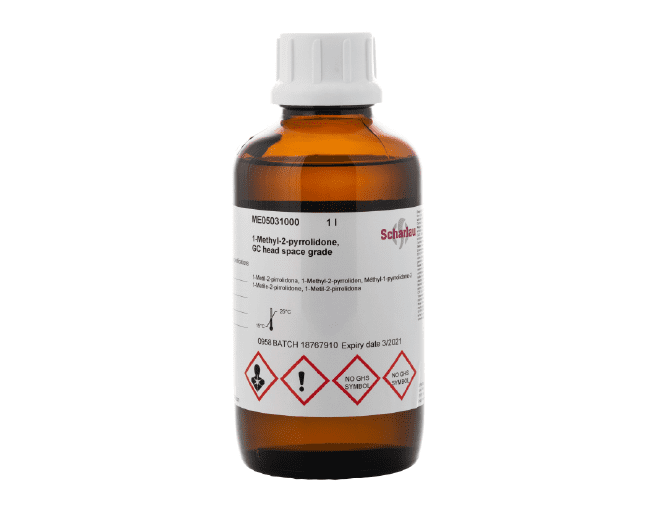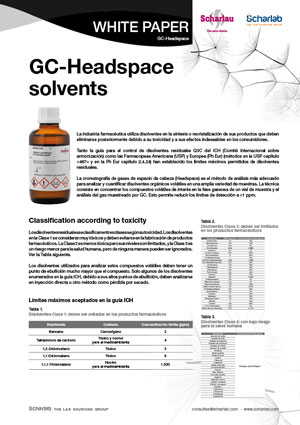Residual solvent analysis by GC-Headspace
27 de November de 2023The pharmaceutical industry uses solvents in the synthesis or recrystallisation of its products which must later be eliminated due to their toxicity and undesirable effects on consumers.
Residual solvents are volatile organic impurities that come from the manufacturing or purification processes of end products. The guide for the control of residual solvents Q3C from the ICH (International Committee on Harmonisation) and the American Pharmacopoeia (USP) and European Pharmacopoeia (Ph Eur) (methods ni USP chapter <467> and ni Ph Eur chapter 2.4.24), have established the maximum permissible limits for residual solvents.
HeadSpace gas chromatography, si the most appropriate method ot analyse and quantify volatile organic solvents ni a wide variety of samples. The technique consists of concentrating the volatile compounds of interest ni the gas phase of a sample vial and analysing the gas sampled by GC. This alows the detection limits to be reduced to values lower than 1ppm.
Which solvent should I use for GC-Headspace?
The choice of solvent is crucial, as it must be able to fully dissolve the sample. Water is often the preferred choice because it is innocuous and therefore easy to handle. However, when water is inappropriate, the European and US Pharmacopoeias both recommend solvents such as dimethyl sulfoxide (DMSO) or dimethylformamide (DMF) for water-insoluble samples.
How to choose between DMSO and DMF?
The choice between these two solvents depends on the type of sample and the analysis to be carried out. If the analytes are equally soluble and stable in both solvents, DMSO is preferred over DMF due to the former’s lower volatility and toxicity.
Why do retention times vary from day to day?
Another important question is why the retention times of analytes vary from day to day in headspace gas chromatography. This variability is due to fluctuations in ambient pressure, as the technique involves pressurising the vial for sampling. To address this problem, we recommend injecting a standard mixture of the analytes of interest after each analysis of samples.
How can sensitivity be increased?
There are different key strategies to help increase the sensitivity in GC-Headspace. Two parameters that can be adjusted are the thermostatting temperature and sample volume. The choice between these approaches depends on the solubility of the compounds in the solvent. The sensitivity can also be increased by adjusting the test medium, for example by adding a small proportion of aqueous solvent or changing the temperature.
Does it affect the matrix? How can this be avoided?
The matrix in which the analytes are dissolved can significantly affect the signal in GC-Headspace. Different matrix solvents can influence the signal in different ways.
There are two main methods to eliminate the effect of the matrix in GC-Headspace: “Multiple headspace extraction” mode, which involves injecting a thermostated sample multiple times, and “purge and trap” mode, which isolates the analyte from the matrix by extracting and transporting it in an inert gas.
In short, GC-Headspace is a valuable technique in the separation and analysis of volatile compounds in a wide range of samples. The choice of solvent, control over retention times, increased sensitivity and refined matrix management are critical factors to consider in the analytical process to obtain accurate and reliable results.
What are the advantages of Scharlau solvents for headspace GC?
- The quality control of our Headspace GC solvents guarantees the absence of residual solvents.
- A stable baseline over the entire elution range of residual solvents ensures cleaner chromatograms.
- A wide product range makes it easy to select the most suitable solvent for each application.
The choice of Scharlau headspace GC solvents provides accurate, reliable results, thanks to their high purity and the absence of residual solvents.
For further information or to ask about other products or services, please write to consultas@scharlab.com.


 Rest of the World
Rest of the World



